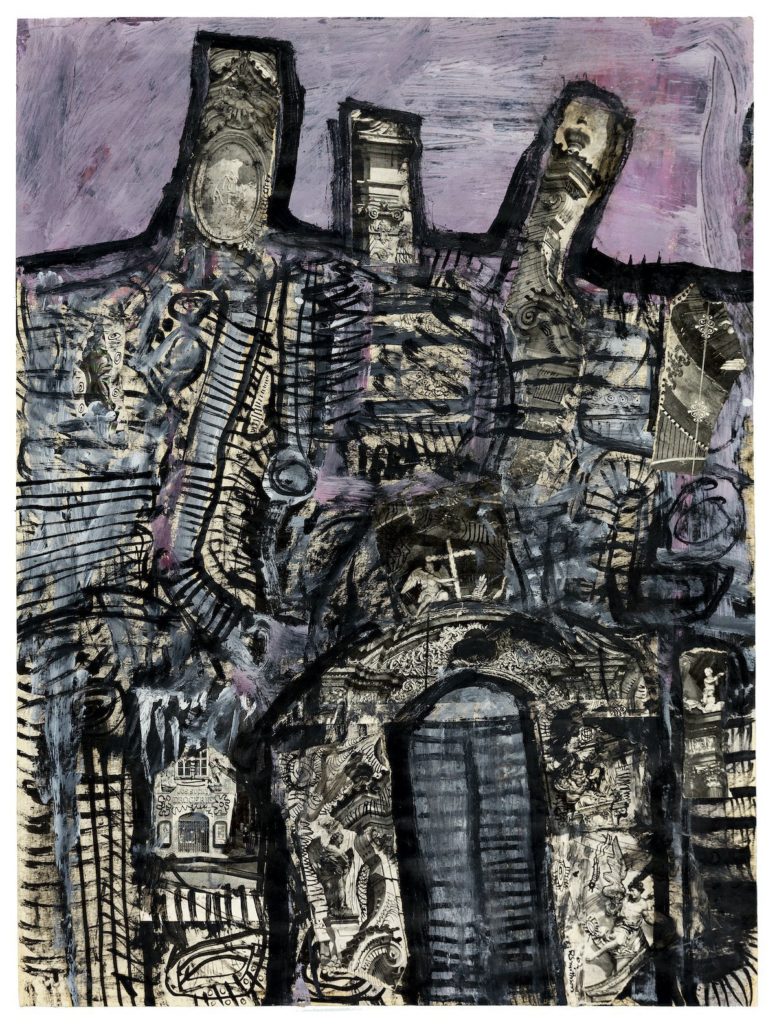Haunted: Robert Smithson’s ‘My House is a Decayed House’

The following text is excerpted from Dr. Suzaan Boettger’s research for her book in process, The Passions of Robert Smithson, Art and Life. Follow her on Instagram @NatrCultr, where images are tagged #UnknownSmithson.
‘History has many cunning passages, contrived corridors.’
If the sardonic analogy sounds like Robert Smithson, you’re close: it was written by his favorite poet, T.S. Eliot. The line could apply to the aged Renaissance and Baroque architecture jumbled on a dusky hillside that Smithson depicted in a gouache, ink and collage painting on paper in 1962. But to name it he took another assertion from that poem by Eliot, Gerontion: ‘My house is a decayed house.’ Visually rich, given that enigmatic title—no residence is seen—yet rarely exhibited and never before analysed, My House Is a Decayed House encapsulates Smithson’s artistic approach and personal concerns from late 1961–63 that radiate into his later work.

From the gloomy blue-gray-black terrain rising to about three-quarters of the paper’s twenty-four-inch height, three dark towers jut into a violet sky, its opacity and their skewed angles signaling something awry. Horizontal striations call up terraces and steps around the facade of a domed Baroque church with decorative flourishes. Pictures of architectural and statuary fragments cut from book illustrations and embedded within paint and overlaid with marking, reflect the popularity of collage following the previous fall’s international survey The Art of Assemblage at the Museum of Modern Art, New York. Repeated hatch marks and obscure arches and rectangles within the shadowy scene invoke Piranesi’s etchings of imaginary prisons. The view exaggerates what Smithson would have experienced the previous summer when in Rome for his show at Galleria George Lester.
Excerpted from Holt/Smithson Foundation’s Scholarly Text Programme with permission. To read the full essay, click here.
